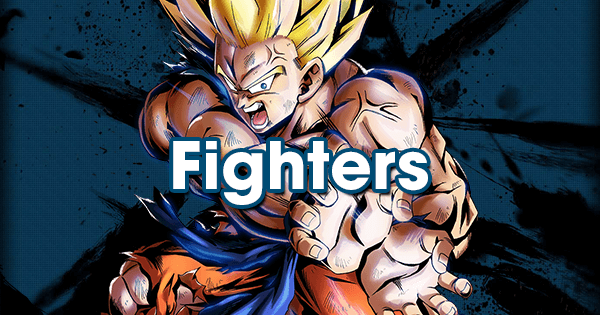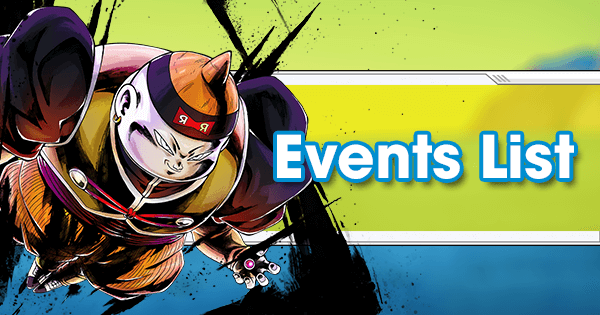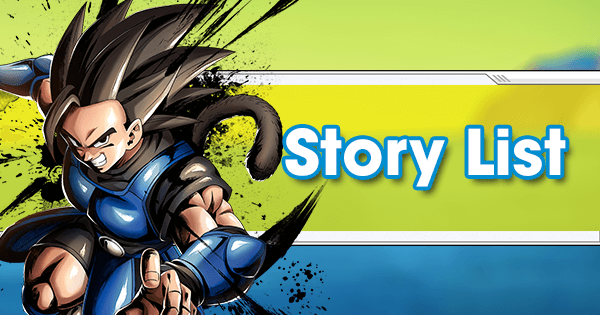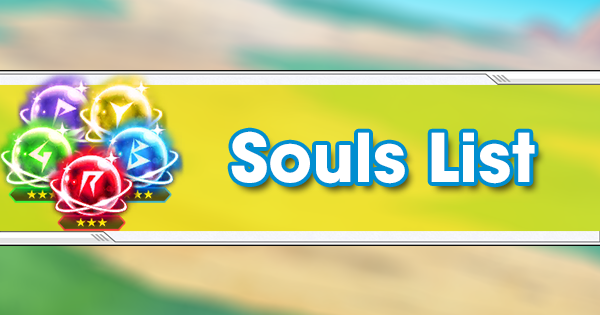Introduction

Dragon Ball Legends is a gacha game with both RPG and Fighting Game mechanics. Unlike DBZ Dokkan Battle, the main focus here is PVP or “Player VS Player”--taking part in Matches that strongly resemble the 3D DBZ fighting games released on home consoles for the past 20 years.
This guide is for everyone who’s starting Dragon Ball Legends for the first time with no prior knowledge of the game.
Before Starting, Should You Re-Roll?
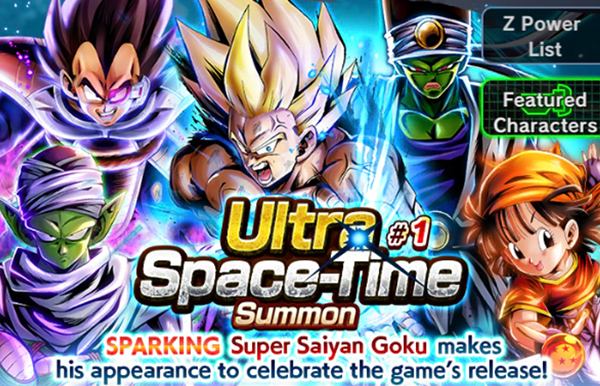
A re-roll is the process of starting a new game (multiple times) until the Player summons the best available Fighters using the Chrono Crystals initially provided (Chrono Crystals are the main currency of the game).
While re-rolling is certainly recommended, it’s not mandatory and depends on how the Player wants to play. For those who are only interested in PVE (offline) content, there’s a good chance everything can be completed with a good set of well-trained HERO Fighters (the lowest rarity currently in the game).
For Players aiming to get strong on the PVP scene, it's an entirely different story. Rarer Fighters tend to have stronger Abilities, so it’s preferable to re-roll until the Player summons at least two Sparking Fighters.
How to Re-roll
-
Install the Dragon Ball Legends app.
-
Complete the tutorial.
-
Summon as many Fighters as possible with the Chrono Crystals available. If these Fighters are desirable, there’s no need to re-roll.
-
If not, delete the app or the game’s data and repeat from beginning until satisfactory Fighters are summoned.
The Re-Roll guide goes into more detail about what Tags are dominating the Meta, and which high-tier Fighters are currently pullable--this Guide updates as summon events are released and expire.
Fighting Mechanics
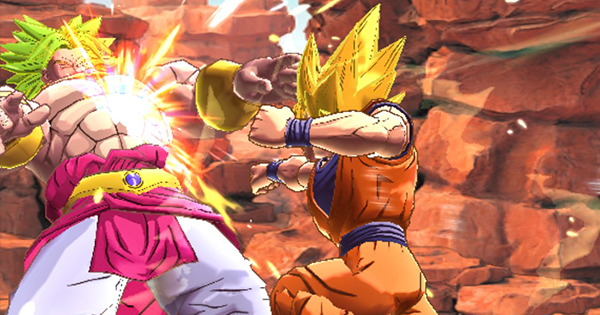
The game begins with a pretty simple tutorial that explains all the controls needed to play the game:
-
Swiping upwards moves the Fighter forward.
-
Swiping downwards moves the Fighter backward.
-
Repeatedly touching the screen when close to the Enemy has the Fighter throw some basic punches or a single Energy Blast if the Enemy is far away.
-
Pressing and holding a finger on the screen will charge the Ki Meter faster than it would be charged by the Fighter standing still. Ki is needed in order to use Arts Cards, which can be seen at the bottom of the screen. Understanding how to Combo Arts Cards and manage Ki is essential to victory.
-
Swiping left or right performs a Vanish Step. Vanish Steps are really important because it’s the only purely Defensive action. Vanish Stepping when an exclamation mark shows up above the Fighter’s head allows them to dodge Enemy Attacks. This action drains the Vanish Gauge which appears under the Fighter. It will recover after some time, so a good strategy is to attack right or swap with another Fighter on the Team right after dodging. The Vanish Gauge will not replenish while Fighters are charging their Ki or Attacking.
-
Tapping the Fighter icon activates their Main Ability. The effect of the Main Ability differs from Fighter to Fighter, and the specifics can be found in each Fighter’s “Abilities” tab
-
When two Fighters clash (i.e. do a Rush at the same time, or start a beam struggle) they instigate a “Dokabaki Impact”. Two bars will appear, and the player who fills the bar higher wins.
-
Each Art Card has a random chance of Dragon Ball appearing at its upper left corner. By landing seven of these Moves, the Fighter can perform a Rising Rush--a move so powerful it can potentially knock out Fighters with considerably higher power levels.
There are currently six types of Arts Cards:
-
Strike (Red, Melee Attacks)
-
Blast (Yellow, Ranged Attacks)
-
Extra Move (Green, Stats Buffs and/or other effects)
-
Also called a Quirk or Special by the game
-
-
Special Move (Blue, deals huge Damage)
-
Ultimate Move (Blue with a spiked border, only for certain Fighters)
-
Awakened (Purple, only for certain Fighters)
Strengths and Weaknesses
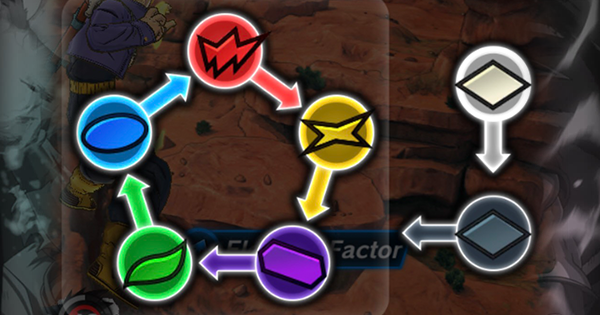
There are seven Elements in the game. Every Fighter is represented by an Element, each with strengths and weaknesses as shown in the table above.
-
BLU = Strong to RED and weak to GRN.
-
GRN = Strong to BLU and weak to PUR.
-
PUR = Strong to GRN and weak to YEL.
-
YEL = Strong to PUR and weak to RED.
-
RED = Strong to YEL and weak to BLU.
These are the main five Elements. There are two additional “special” elements.
-
DRK = Strong to all main Elements, but weak to LGT (Currently AI only).
-
LGT = Strong to DRK and neutral to everything else (Currently Shallot only).
How to Read a Fighter Analysis Page
Each Fighter has a page on this site that provides info and advice for the best ways to use them in the game.
Fighter Stats
Health, Attack Values (Strike and Blast), Defense Values (Strike and Blast), Critical Rate (Damage randomly increased by 25%), Ki Recovery Speed and Vanish Step Recovery Speed.
Fighter Info
Battle style
- Melee Fighters have high Strike Attack.
- Ranged Fighters have high Blast Attack and often have faster Ki Recovery Speeds compared to Melee Fighters.
- Support Fighters have Abilities that benefit every Teammate, often involving healing. Their stats are usually pretty even with no one stat being significantly higher than the others.
- Defense Fighters excel in Health and one or both types of Defense stat.
Arts Cards Held
When building a Team, the Fighters chosen will influence the Arts Cards that appear in-battle. For example, selecting a lot of Melee Fighters usually means drawing more Strike Arts Cards.
Tags
Each Fighter has a different set of Tags which affect the Buffs available to them from their fellow Teammates. Fighters should be put into Teams where their Z-Abilities Buff Tags that their Teammates have and vice versa.
Overview
This section provides a short summary of the pros and cons of a Fighter, as well as what makes them unique upon release.
Strengths and Weaknesses
This is where GamePress elaborates on the pros and cons of a Fighter and their comparative usability in the current Meta. This section is great for both new Players and seasoned Veterans because it contextualizes the Fighter's stats, Moveset, Equipment value, and Team Synergy.
Team Synergy
Team Synergy is often based on Element Group or Tags, and this section lists the best Team Builds based on both of these aspects as well as provides some analysis on the current Teammate options within a Build and how a given Fighter performs within the Builds available.
Equippable Items and Recommended Equipment
This section provides links to all the Equips that Fighter can use and what GamePress recommends based on what is available upon that Fighter's release.
Abilities and Moves
Main Ability
This Ability is activated by tapping the Fighter's icon. Usually, there is a time requirement (expressed in “Timer Counts”, roughly the equivalent of seconds) that must be fulfilled before activating these Abilities.
Unique Ability
Unless stated otherwise, these Abilities will activate on their own.
Z-Ability
An Ability that is always active and that every member of the Team (even ones that are in the Team, but aren’t actually fighting) are constantly using. It usually consists of increasing some kind of stat for a certain category of Fighters.
Special, Extra, Ultimate, and Awakened Moves
These Moves appear as Arts Cards alongside the more common Strike and Blast Arts Cards.
Resistance
Some attacks like Special Moves deal a particular type of Damage called Complex Damage. The Damage received is dependant on the Resistance a Fighter has to that type of Damage (Slice, Pierce, Impact, Explode).
Soul Boost Stats and Recommended Soul Boosts
This section lists the hard numbers on how Soul Panels Boost a stat or improve an Ability, as well as provides recommendations for which stats to prioritize.
Rarities, Z-Powers and Limit Break!
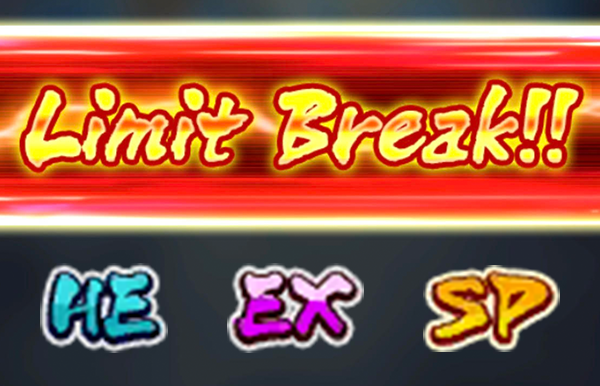
There are currently three rarities in the game:
-
HE, or HERO Fighters are common.
-
EX, or EXTREME Fighters are uncommon
-
SP, or SPARKING Fighters are the rarest and usually stronger.
Fighters are unlocked by collecting Z Powers, summoning or playing events. When summoning, HE give 100 Z Powers, EX gives 250 Z Powers and SP gives 600 Z Powers.
Collecting 100 Z Powers unlocks a Fighter. Collecting even more Z Powers makes the Fighter stronger and start gaining Stars.
Each Fighter can have up to 7 stars, and each Star has a different effect.
Please note that after obtaining a Star, the Z Power Counter resets to 0.
-
0 Stars - 100 Z Powers - Obtained Fighter
-
1 Star - 200 Z Powers - Health, Attack (Strike, Blast), Defense (Strike, Blast) and Critical increased by 5%
-
2 Stars - 400 Z Powers - Health, Attack (Strike, Blast), Defense (Strike, Blast) and Critical increased by 5%
-
3 Stars - 700 Z Powers - The Z-Ability of the Fighter gets upgraded to level 2
-
4 Stars - 1400 Z Powers - Health, Attack (Strike, Blast), Defense (Strike, Blast) and Critical increased by 5%
-
5 Stars - 2400 Z Powers - The Z-Ability of the Fighter gets upgraded to level 3
-
6 Stars - 5000 Z Powers - Health, Attack (Strike, Blast), Defense (Strike, Blast) and Critical increased by 5%
-
7 Stars - 9999 Z Powers - The Z-Ability of the Fighter gets upgraded to level 4
Z Powers are obtainable through Missions, Events, and Scout Battles. It’s always good to check the Frontpage Calendar for Live Events and Scout Battles to know where and when certain Fighters can be unlocked without the need to summon them.
Soul Boost and Increasing Level

“Rising Souls” and “Super Souls” can be collected in Story Mode. These come in different colors (Red, Orange, Blue, Green, Purple) and each Element needs the Souls of the same color (except for DARK and LIGHT, which just require a wider variety of these items).
Legends Road Events will often release Fighters who can only be Soul Boosted with Event Exclusive Souls.
By going to a Fighter’s Soul Boost, Panels can be unlocked using Zenis and Souls for stat Boosts or additional effects.
Some of these Souls can be bought at the Exchange Shop using Rare Medals. Rare Medals are acquired by logging in, completing all the challenges in a Story Mode Chapter, or by playing PVP.
After unlocking a specific number of Panels, “Class-Up” becomes available. Unlocking the Class Up Panel increases the Fighter’s Max Level.
Currently, each Fighter can Class Up Four times with a Max Level of 2000.
Due to the importance of stats in the game, it’s suggested to Class Up Fighters as soon as possible.
Final Notes

-
The Daily discounted summons are a good way to spend Chrono Crystals, because of the 80% tradeoff.
-
It’s recommended to take advantage of the EXP and Zeni events with the Silver and Golden Saibaman. They help a lot for leveling a Fighter.
-
Free-of-charge training is essential. By going into training mode through the main menu, newly obtained low-level Fighters can be brought up to speed in the background.
-
Because of his unique Element that no one else in the game has the game (LGT), Shallot is a good Fighter to power up initially, especially since he’ll have to fight some DRK Fighters throughout Story Mode.
Have fun with Dragon Ball Legends!




